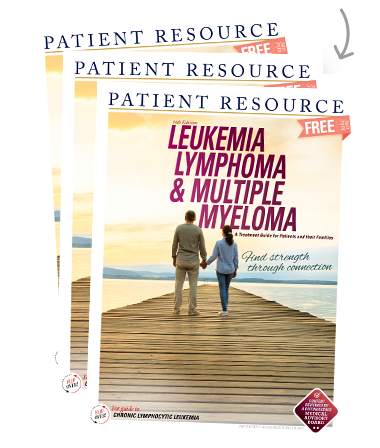Stem Cell Transplantation
A stem cell transplant is a procedure in which a person receives healthy stem cells (blood-forming cells) to replace their own stem cells that were destroyed by treatment with radiation or chemotherapy. The goal is to create a new immune system by helping restore the body’s ability to produce blood cells.
The soft, spongy tissue inside your bones that is bone marrow produces blood-forming (hematopoietic) stem cells. They make billions of white blood cells that fight infection and illness, red blood cells that deliver oxygen to and remove waste from your body’s cells, and platelets that help your blood clot to stop bleeding.
Also called a hematopoietic cell transplant, a stem cell transplant can involve different sources of stem cells:
- A bone marrow transplant (BMT) uses stem cells obtained from inside bones. The hip (pelvic) bones have the most marrow, so doctors commonly access bone marrow through the hip.
- A peripheral blood stem cell transplant (PBSCT) uses stem cells obtained from the bloodstream.
- A cord blood transplant uses stem cells in blood vessels of a discarded placenta or newborn’s umbilical cord.
Your doctor may recommend an autologous or allogeneic transplant.
An autologous (“auto”) transplant uses your own stem cells. Sometimes, you will receive another transplant within six months, which is called a tandem stem cell transplant.
An allogeneic (“allo”) transplant uses stem cells donated by a family member or someone not related to you. These stem cells are often found through a national or international registry. Along with replacing stem cells, the donated cells may also attack and kill cancer cells remaining after high-dose conditioning. This is called the graft-versus-tumor effect (also called graft-versus-leukemia or graft-versus-cancer-cell).
If you are using stem cells from a family donor, it may help you to know the following:
- A sibling has a 1 in 4 chance of being a donor match.
- A syngeneic stem cell transplant uses stem cells from an identical twin.
- Half-matched (haploidentical) transplants create a bigger pool of potential donors. It might include a parent or child — or even an aunt, uncle or grandparent.
Donor tissue must match yours as closely as possible. A close match reduces the chance of a rare but serious condition called Graft-versus-Host Disease (GvHD), in which transplanted donor immune cells attack the patient’s skin, liver, gastrointestinal tract and other organs.
Organizations such as Be The Match (operated by the National Marrow Donor Program) have created registries of millions of potential donors (www.bethematch.com).
The Transplant Process
Stem cell transplants generally occur as follows:
- Collection. Stem cells from you or a donor are collected, filtered and processed. In some cases, the cells are frozen and stored, and later thawed.
- Conditioning. You might receive high-dose chemotherapy or full-body radiation therapy to destroy the cancer cells. You might be given a reduced-intensity conditioning treatment that uses milder doses of chemotherapy and radiation therapy. The potential success of this approach depends entirely on the anti-cancer effect of the new immune system transplanted into the patient.
- Transfusion. A doctor infuses the harvested stem cells into your body through a vein.
- Recovery and engraftment. Within about 2 to 4 weeks, healthy cells begin to grow (engraft). While your weakened immune system recovers, you will be at risk for infection. This process may take multiple years and will require ongoing use of prophylactic antiviral and antibacterial medications as well as repeat inoculations with childhood vaccines. The number of red blood cells, white blood cells and platelets will continue to be monitored until they are back to safe levels. Allogeneic transplant recipients also remain at risk for chronic GvHD and may require lifelong treatment for this condition.
Support is Key
It is important to arrange the help of a caregiver pre-transplant. If a loved one or friend is not available, consider hiring a temporary caregiver to help with these and other tasks:
- Deep clean the home before you return.
- Keep your home safe to help protect you from infection.
- Schedule and take you for appointments and immunizations.
- Ensure you stay on schedule with your medications.
- Care for your dressings or central venous catheter, and deliver medicines through the catheter, if applicable.
- Check for signs of infection or other problems.
- Make healthy meals and encourage you to eat well.
- Report changes to your medical team.
Graft-versus-Host Disease
Graft-versus-Host Disease (GvHD) is a condition that occurs when graft immune cells from a donor recognize the patient’s own healthy cells, also called host cells, as foreign and attack them. It is common for patients receiving an allogeneic stem cell transplant as part of cancer treatment to develop at least a mild case of GvHD.
GvHD can be mild, moderate or severe. On average, chronic GvHD occurs about six months after a stem cell transplant. If it emerges within 100 days of the transplant, it is classified as acute.
Your doctor can take steps to minimize the risk of GvHD. This includes careful selection of a donor, as well as a thorough examination of the donor’s tissues. Your doctor may prescribe certain drugs designed to suppress the donor’s immune cells, causing them to have less of a chance to attack host cells.
If you experience any of these symptoms following transplantation, alert a member of your medical team right away:
- Pain in the abdominal area, abdominal swelling or diarrhea
- Rashes, raised or discolored skin, skin thickening or tightening
- Yellow skin or eyes, dry eyes
- Taste changes or loss of appetite
- Frequent infections, unintentional weight loss
- Indigestion, abnormal gas or bloating



